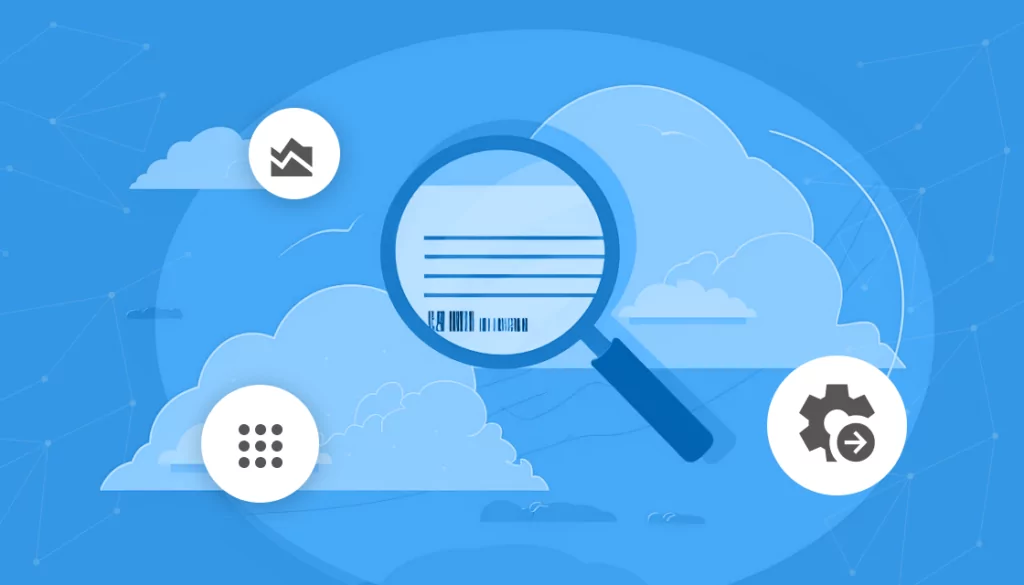What Is CMDB Discovery?
A configuration management database (CMDB) is a central resource for managing configurations in an IT environment. CMDB discovery is the process of identifying and collecting data on an organization’s IT assets and their relationships. It’s a crucial part of IT service management (ITSM) and plays a key role in maintaining an accurate picture of the IT infrastructure.
The data collected in the CMDB helps organizations make informed decisions, achieve regulatory compliance, and manage risks better. It also helps in understanding the relationships between these assets. For example, an application might be dependent on a specific server and database.
The CMDB discovery process involves scanning an organization’s IT environment to detect and collect data on assets like servers, network devices, and applications. This process is typically automated and can use one or more techniques to ensure all network assets are accounted for. After the assets are discovered, they are cataloged in the CMDB, providing a unified view of the IT infrastructure. This is part of a series of articles about IT asset management.
Table of Contents
ToggleCMDB Discovery Techniques Compared
Here is a quick summary of CMDB discovery techniques. Below we cover each technique in more detail.
| Technique | Pros | Cons |
| Ping Sweep Method | Simple and fast; suitable for quickly discovering a large number of devices | Limited information; may not find devices configured to ignore pings |
| Domain Name System (DNS) | Can provide detailed information like hostname and network role | Dependent on DNS server maintenance; may miss non-registered devices |
| Secure Shell (SSH) | Offers detailed data about devices, including OS and software | Requires administrative access; potential security issues; time-consuming |
| Windows Management Instrumentation (WMI) | Provides comprehensive details about Windows systems | Requires administrative access; limited to Windows systems |
| Simple Network Management Protocol (SNMP) | Versatile for a range of network devices; detailed device information | Requires SNMP support and correct configuration on devices |
| Netflow | Detailed network traffic insights; identifies device communication | Requires significant storage and processing resources |
| Network Mapper (NMAP) | Identifies a wide range of IP-enabled devices; detailed service information | Requires technical expertise in network administration and security |
| Packet Capture | Granular view of network traffic; helps in diagnosing network issues | Resource-intensive; not ideal for high-traffic networks or limited resources |
| Intelligent Platform Management Interface (IPMI) | Detailed hardware information; remote management capabilities | Primarily hardware-focused; limited software-level information |
| Configuration Automation Tools | Automates configuration data collection; historical view of IT environment | Effectiveness depends on compatibility with the IT environment |
Top 10 CMDB Discovery Techniques in Detail
There are several techniques for performing CMDB discovery, each with its own strengths and weaknesses. Here are some of the most common ones:
1. Ping Sweep Method
The ping sweep method involves sending a ping request to a range of IP addresses. Any device that responds to the ping is considered active and thus discovered. This method is simple and fast, making it suitable for discovering a large number of devices quickly. However, it may not be able to discover devices that are configured not to respond to pings.
Ping sweeps are particularly useful in initial discovery stages, where the goal is to identify as many devices as possible. However, they provide limited information about the devices.
2. Domain Name System (DNS)
The DNS technique involves querying the DNS server for a list of hostnames and their corresponding IP addresses. This method can discover devices that are part of the DNS. However, it may miss devices that are not registered with the DNS server.
The DNS method can provide more detailed information than a ping sweep, such as the device’s hostname and possibly its role within the network. However, the accuracy of this method depends on the upkeep of the DNS server. If the DNS server is not regularly updated, it may provide outdated or inaccurate information.
3. Secure Shell (SSH)
The Secure Shell (SSH) technique involves remotely logging into a device to gather information about it. This method can provide detailed data about a device, such as its operating system, installed software, and configuration settings.
However, the SSH method requires administrative access to the device, which may not always be possible or permitted, and can create security issues. It can also be time-consuming, especially when dealing with a large number of devices. Despite these challenges, the SSH method is often used for discovering Unix-based systems because of the level of detail it can provide.
4. Windows Management Instrumentation (WMI)
The Windows Management Instrumentation (WMI) technique is similar to the SSH method but is designed specifically for discovering Windows-based systems. It allows for remote management and data collection, providing detailed information about the device, including its hardware, software, and configuration settings.
Like the SSH method, the WMI method also requires administrative access, which can be a challenge in some environments.
5. Simple Network Management Protocol (SNMP)
The Simple Network Management Protocol (SNMP) method is useful for managing and collecting information from network devices like routers, switches, and printers. It can provide a wealth of information, including the device’s manufacturer, model, and configuration settings.
The SNMP method requires the device to support SNMP and be correctly configured to respond to SNMP queries. However, it’s a versatile method that can discover a wide range of network devices.
6. Netflow
Netflow, a networking protocol developed by Cisco Systems, is a powerful tool in CMDB discovery. It helps in monitoring and collecting IP traffic data throughout the network. This protocol provides detailed insights about network traffic, such as source and destination IP addresses, packet and byte counts, timestamps, and interface identifiers.
With this data, you can gain a comprehensive understanding of what’s happening across your network, providing valuable input for your CMDB. A well-implemented Netflow solution can help you identify all the devices that are communicating on your network, track application usage, and provide insights on potential security threats.
However, Netflow requires considerable storage and processing power. Thus, you should consider your organization’s resources before adopting this technique.
7. Network Mapper (NMAP)
Network Mapper (NMAP) is an open-source tool used for network discovery and security auditing. It can identify devices on a network and collect data about the operating systems they are running, available services, and other attributes.
NMAP can help you in identifying all IP-enabled devices on your network, including servers, routers, switches, workstations, and even IoT devices. It can also provide information about the services running on these devices, which can be helpful in maintaining your CMDB.
However, like Netflow, NMAP requires a certain level of technical expertise to use effectively. It’s important to have a team well-versed in network administration and security to properly leverage this tool.
8. Packet Capture
Packet capture, also known as packet sniffing, involves intercepting and logging traffic that passes over a digital network. By examining this data, IT professionals can diagnose and solve network problems and gather information about network usage patterns.
Packet capture tools provide a granular view of network traffic. They can identify the types of packets, their source and destination, and their payload. This information is useful for understanding how network devices and applications are interacting with each other, which helps maintain an accurate CMDB.
However, packet capture is a resource-intensive technique. It may not be ideal for organizations with limited resources or those with high levels of network traffic due to the large volumes of data it can generate.
9. Intelligent Platform Management Interface (IPMI)
The Intelligent Platform Management Interface (IPMI) is a set of standardized specifications that allow for the management and monitoring of computer hardware. With IPMI, IT administrators can monitor system health, log server data, and control systems remotely.
IPMI can offer detailed information about servers, including hardware configurations, operating system data, and performance metrics. This information is useful when maintaining a CMDB in a large-scale or rapidly changing IT environment. While IPMI can offer extensive hardware data, it’s not designed to provide software-level information.
10. Configuration Automation Tools
Configuration automation tools are software solutions that automate the process of configuring a system’s resources. They can reduce the time and effort required to maintain a CMDB by automatically collecting and updating configuration data.
These tools can gather a wide range of data, from hardware and software inventories to detailed configuration settings. They can also track changes over time, providing a historical view of your IT environment that can be invaluable in troubleshooting and planning.
While configuration automation tools can significantly streamline CMDB discovery, their effectiveness heavily depends on their compatibility with your IT environment. Therefore, it’s crucial to choose a solution that aligns with your organization’s technology stack.

Lanir specializes in founding new tech companies for Enterprise Software: Assemble and nurture a great team, Early stage funding to growth late stage, One design partner to hundreds of enterprise customers, MVP to Enterprise grade product, Low level kernel engineering to AI/ML and BigData, One advisory board to a long list of shareholders and board members of the worlds largest VCs
Tips from the Expert
In my experience, here are tips that can help you enhance CMDB discovery for better data accuracy and service management:
-
Correlate multiple discovery methods
Use SNMP, NMAP, and API-based methods to ensure thorough data collection and reduce gaps, leading to more accurate CMDB records.
-
Implement automated dependency mapping
Use dynamic mapping tools to keep track of interdependencies and automatically update the CMDB with changes in real time.
-
Integrate with ITSM and change management systems
Automate CMDB updates following approved changes to minimize errors and ensure consistency.
-
Automate data normalization and enrichment
Ensure that discovery data is consistent and enriched with relevant context, improving decision-making and compliance reporting.
-
Conduct continuous audits and monitoring
Use automated tools to regularly check for discrepancies, outdated entries, or gaps in data, keeping the CMDB reliable and up-to-date.
CMDB Discovery Recommendations and Best Practices
As with any IT process, CMDB discovery should be approached with a strategic plan and best practices in mind. Here are some recommendations for effective CMDB discovery:
Use Agentless Discovery Methods as a Starting Point
Agentless discovery is a method that uses network protocols such as SNMP, WMI, or SSH to collect data from CIs. This method is generally less intrusive and easier to deploy than agent-based discovery, as it doesn’t require any software to be installed on the CIs. It is particularly effective for discovering hardware devices and basic software information.
Agentless discovery is often a good starting point for CMDB Discovery, as it can quickly provide a broad overview of the IT environment. However, it may not be able to discover all types of CIs or gather in-depth information about them. For these cases, other discovery methods may be required.
Use Agent-Based Discovery when Necessary
While agentless discovery is a good starting point, there are situations where more detailed data is required. In these cases, agent-based discovery can be used. This involves installing a software agent on each CI which then collects and sends data back to the CMDB.
Agent-based discovery can provide more comprehensive data, such as detailed software configurations and usage statistics. It is also more reliable in situations where network connectivity is unreliable or the CIs are not always connected to the network. However, it can also be more intrusive and complex to manage, as it requires the installation and maintenance of software agents on each CI.
Discover CIs with Fingerprinting Technology and Preset Rules
Another effective method for CMDB Discovery is the use of fingerprinting technology and preset rules. This method involves scanning the CIs and comparing the collected data against a database of known configurations or “fingerprints”. When a match is found, the CI can be automatically identified and classified.
Preset rules can also be used to identify and classify CIs based on certain criteria, such as IP address ranges, device types, or software versions. These rules can be customized to fit the organization’s specific needs and can help to automate the discovery process further.
Use Multiple Discovery Methods and Correlate Data
No single discovery method is perfect for all situations. Therefore, it’s recommended to choose a CMDB that can use multiple discovery methods and correlate the collected data. This allows the CMDB to provide a more complete and accurate picture of the IT environment.
A CMDB that can correlate data can also help to eliminate duplicates and reconcile conflicts. This is especially important in large environments where the same CI may be discovered by different methods or from different sources.
Faddom: The Easy Alternative to CMDB Discovery
Most IT teams struggle to maintain an accurate CMDB for a variety of reasons, but it is mostly because IT environments on-premises and in the cloud are constantly changing. Many CMDBs cannot respond to the pace of DevOps or virtual assets like VMs, containers, and other cloud application resources. Others still require manual data entry validation and manual audits to stay up to date with new CI configurations and dependency changes.
On the other hand, Faddom is agentless, self-service software that helps you visualize your on-premise and cloud infrastructure in real-time with continuous, automatic updates — in as little as 60 minutes. Start a free trial today by filling out the form on the sidebar!










